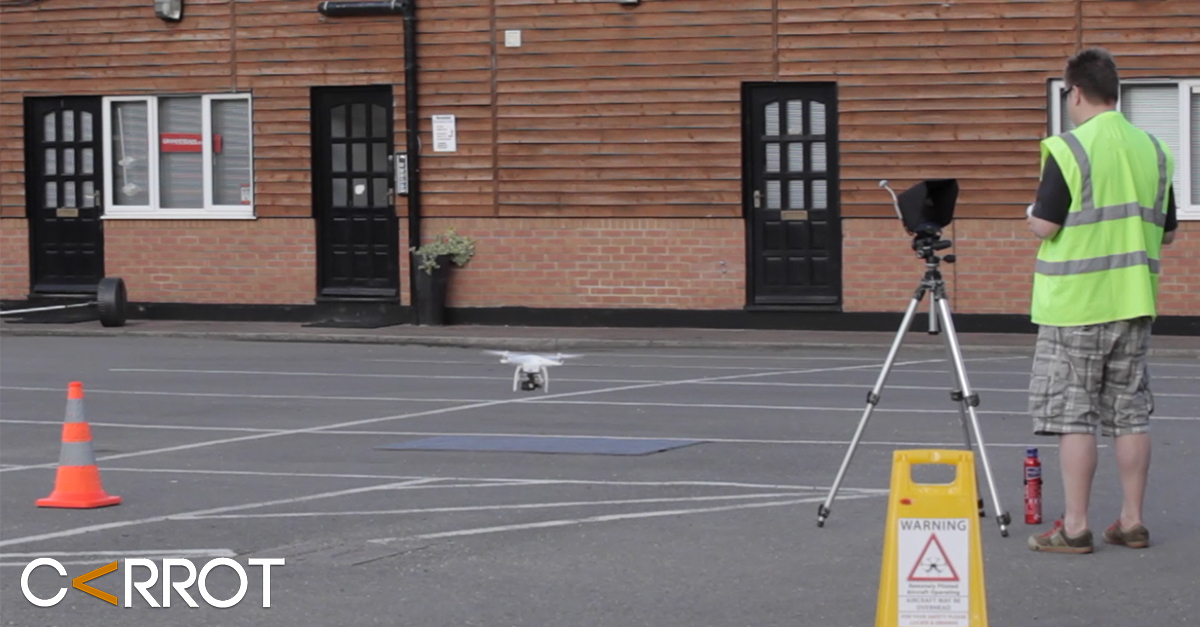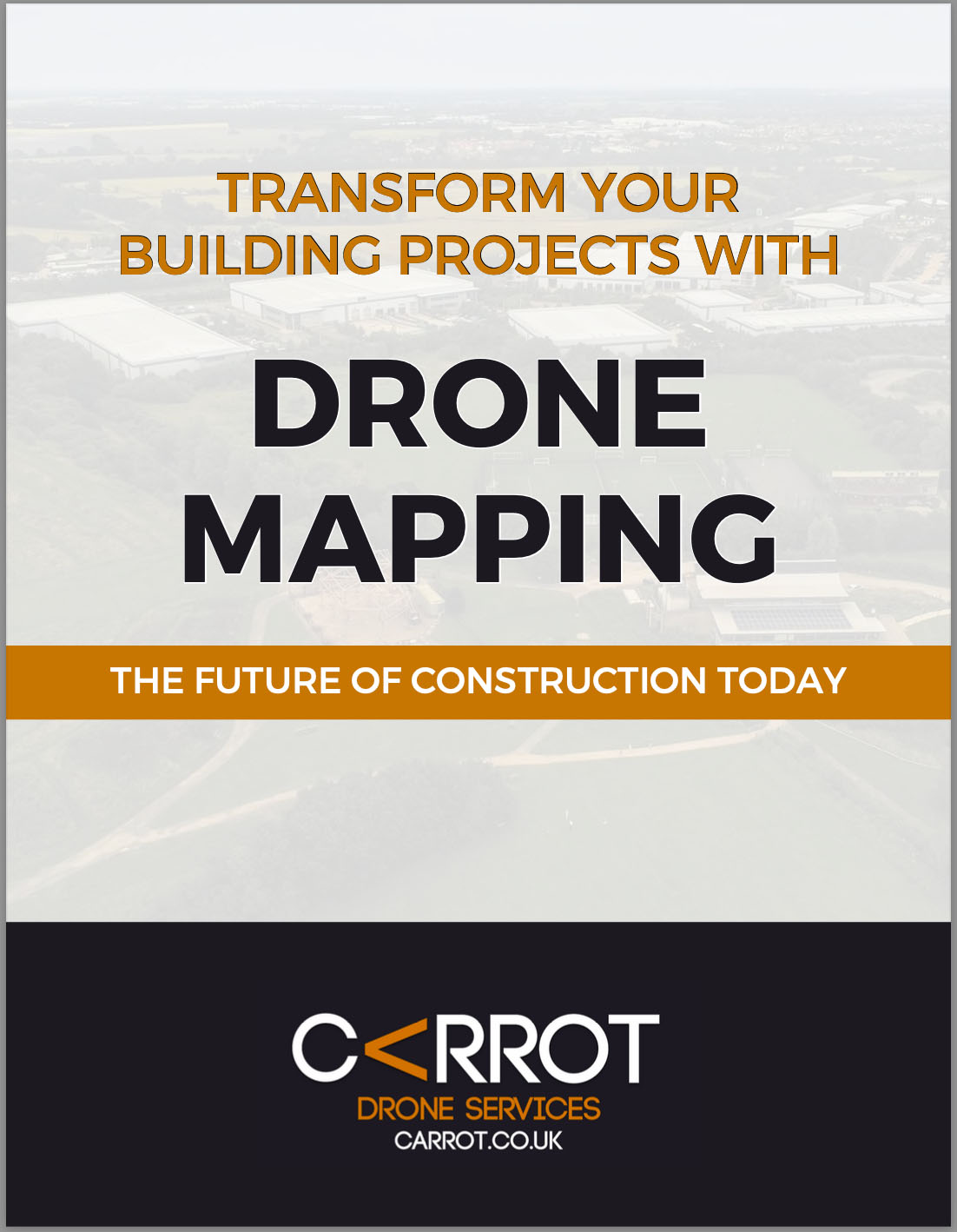Read Time 5 mins
18/01/2024

Introduction
Property surveys have long been a cornerstone in the realms of construction, real estate, and land development. Traditionally, these surveys have been a meticulous and time-consuming process, often resulting in significant expenses. From deploying manpower across vast landscapes to navigating through challenging terrains, the cost and time implications have always been substantial factors. The precision required in such surveys further adds to the complexity, leaving room for human error and additional costs in rectifications.
However, the advent of drone technology has ushered in a revolutionary change. In this article, we delve into how drone-assisted property surveys are redefining the norms of cost and time efficiency in this field. We will explore the transformative impact of drones, offering a comprehensive view of their benefits in enhancing the accuracy, reducing the operational costs, and significantly cutting down the survey time. The integration of drones in property surveys is not just a technological advancement; it's a game-changer for the industry, marking a new era of efficiency and effectiveness.
The Traditional Method of Property Surveys
Traditional property surveys have relied heavily on manual techniques and ground-based equipment. Surveyors, armed with tools like theodolites, tape measures, and levels, would meticulously measure and map out land parcels and structures. This process often required a team of professionals working on-site for extended periods, navigating through diverse and sometimes challenging terrains.
The accuracy of these surveys depended largely on the skill and experience of the surveyors, as well as the quality of their tools. Despite their expertise, human error remained an inherent risk, leading to potential inaccuracies in the data collected. Furthermore, the physical demands of conducting such surveys often led to prolonged project timelines, especially for large or difficult-to-access areas.
The cost implications of traditional property surveys were significant. The need for specialised personnel, extensive man-hours, and the potential for return visits to correct errors or gather additional data added to the overall expense. Additionally, the slower pace of manual surveys meant delays in project timelines, impacting budgets and planning schedules.
In summary, while traditional property survey methods have been the industry standard for decades, they came with challenges in terms of cost, time, manpower, and accuracy, paving the way for the adoption of more advanced and efficient technologies like drone surveys.
The Advent of Drone Technology in Property Surveys
The emergence of drone technology has marked a significant milestone in the field of property surveys. Drones, also known as Unmanned Aerial Vehicles (UAVs), have brought about a paradigm shift in how property inspections and land surveys are conducted. Equipped with high-resolution cameras, advanced sensors, and GPS technology, drones provide a new vantage point, capturing comprehensive aerial data with remarkable precision and efficiency.
The initial use of drones in property surveys can be traced back to the early 21st century, where they were primarily used for aerial photography and basic mapping tasks. However, as technology advanced, their capabilities expanded dramatically. Modern drones are now capable of conducting detailed topographic surveys, 3D mapping, and thermal imaging, offering insights that were previously unattainable through traditional methods.
The evolution of drone use in property inspections has been driven by continuous advancements in drone technology. Improved flight stability, longer battery life, and enhanced data processing capabilities have allowed drones to become an indispensable tool in the surveyor's arsenal. Furthermore, the integration of sophisticated software solutions enables the seamless processing and analysis of aerial data, providing surveyors with accurate and actionable insights.
From being a niche tool used by early adopters, drones have now become mainstream in the property survey industry. Their ability to quickly and safely access hard-to-reach areas, combined with the cost and time efficiencies they offer, has cemented their role as a key technology in modern property surveys.
Cost-Effectiveness of Drone Surveys
One of the most significant advantages of using drones in property surveys is the remarkable reduction in costs. This cost-effectiveness stems from several factors that differentiate drone surveys from traditional methods.
Firstly, drones can cover large areas in a fraction of the time it would take a ground crew. This rapid data collection translates to fewer man-hours, thereby substantially reducing labor costs. For instance, a survey that might take a team of surveyors several days can be completed by a drone in a few hours.
Secondly, the need for less specialised equipment and personnel on-site further cuts down on operational costs. Traditional surveys often require various tools and a team of skilled professionals, whereas drone surveys can be conducted with minimal ground support.
A direct comparison of costs between traditional methods and drone surveys underscores these savings. For example, a large-scale land survey using traditional methods might cost tens of thousands of pounds, while a drone survey of the same area could reduce costs by up to 50-70%. This is not only due to quicker data collection but also because drones minimise the need for repeat visits to the site, as they can capture comprehensive data in a single flight.
Real-world case studies further illustrate the cost benefits of drone surveys. In one instance, a property development project in the UK utilised drone technology for site mapping and saved approximately 60% in survey costs compared to traditional methods. Moreover, the data accuracy provided by drones led to more efficient planning, avoiding costly mistakes and reworks in the construction phase.
In summary, the cost savings offered by drone technology in property surveys are substantial, making it an increasingly preferred choice for developers, surveyors, and real estate professionals seeking both efficiency and economic feasibility.
Time Efficiency of Drone Surveys
The time efficiency of drone surveys is another critical factor that sets them apart from traditional survey methods. Drones are capable of capturing vast amounts of data in a significantly shorter period, which directly impacts the overall timeline of property survey projects.
For example, drones can survey a large construction site in mere hours, a task that would typically take days or even weeks with ground-based survey teams. This rapid data collection is particularly advantageous in projects with tight deadlines or where quick turnaround times are essential.
In residential property surveys, drones can quickly assess roof conditions, land boundaries, and other critical features without the need for scaffolding or manual climbing. This not only speeds up the survey process but also reduces the time required for planning and preparation.
The impact of this time efficiency on overall project timelines is profound. Developers and surveyors can make faster decisions and proceed with subsequent phases of their projects without the delays associated with traditional survey methods. For instance, in a housing development project, the swift completion of land surveys by drones can accelerate the design and planning phase, ultimately leading to earlier project completion and reduced holding costs.
Moreover, the ability of drones to quickly revisit a site for follow-up surveys ensures that project progress can be monitored effectively, allowing for timely adjustments and updates. This ongoing surveillance capability is particularly beneficial in dynamic project environments where conditions change rapidly.
In conclusion, the time-saving attributes of drone surveys make them an invaluable tool in the modern property surveying landscape, offering substantial benefits in terms of project efficiency and scheduling.
Additional Benefits of Drone Surveys
Beyond cost and time efficiency, drone surveys offer several other significant benefits, enhancing the overall value they bring to property surveys.
Improved Accuracy and Data Quality: Drones equipped with advanced sensors and high-resolution cameras provide superior data quality. They capture detailed aerial imagery and generate precise topographical maps. This level of accuracy is particularly beneficial for applications such as 3D modeling and environmental monitoring, where detail is crucial.
Enhanced Safety for Surveyors: Traditional survey methods, especially in hazardous or hard-to-reach areas, can pose significant risks to surveyors. Drones eliminate the need for physical presence in such environments, thereby enhancing safety. This is especially relevant for surveys of tall buildings, unstable structures, or expansive land areas with challenging terrain.
Environmental Benefits: Drone surveys are less invasive and have a lower environmental impact compared to traditional methods. They require fewer ground vehicles and equipment, resulting in a smaller carbon footprint. This aspect is particularly important in ecologically sensitive areas where minimal disturbance is desired.
Ability to Access Difficult or Dangerous Areas: Drones can easily access areas that are difficult, costly, or dangerous for human surveyors to reach. This includes high altitudes, steep slopes, and remote locations. The ability to survey these areas without the need for physical access is a significant advantage, ensuring comprehensive data collection across all types of terrains.
These additional benefits reinforce the role of drones as a versatile and indispensable tool in modern property surveying, offering a blend of safety, accuracy, environmental friendliness, and unparalleled access.
Legal and Regulatory Considerations
The use of drones for property surveys in the UK is subject to a range of legal and regulatory considerations. These regulations are designed to ensure safe and responsible use of drones in various applications, including commercial property surveys.
The Civil Aviation Authority (CAA) is the primary regulatory body governing drone operations in the UK. Key regulations include the need for commercial drone operators to have the appropriate training and to be registered with the CAA. Additionally, operators must follow the Drone Code, which outlines safe flying practices, such as maintaining a certain distance from people, buildings, and congested areas, and ensuring the drone is always within visual line of sight.
Specific rules also apply based on the drone's weight and the type of activity. For instance, drones weighing over 250 grams require pilot registration, and those used for commercial purposes may need additional certifications or permissions. It's also important to consider privacy laws when conducting property surveys, as drones should not invade the privacy of individuals or capture data without consent where it's expected.
The UK government continuously updates drone laws to address evolving technology and usage scenarios. Therefore, it's crucial for drone operators in property surveying to stay informed about the latest regulations and compliance requirements to ensure legal and safe operations.
In conclusion, while drones offer significant advantages in property surveys, understanding and adhering to the legal and regulatory framework is essential for their successful and compliant use in the UK.
Conclusion
In conclusion, the integration of drone technology into property surveys has ushered in a new era of efficiency, accuracy, and cost-effectiveness. We've explored the transformative impact of drones in revolutionizing the property surveying landscape, highlighting key advantages:
- Cost-Effectiveness: Drones significantly reduce operational costs and eliminate the need for extensive manpower, making property surveys more budget-friendly.
- Time Efficiency: The swift data collection capabilities of drones expedite project timelines, allowing for quicker decision-making and reduced holding costs.
- Improved Accuracy: Drones provide high-quality data, enhancing the precision and reliability of property survey results.
- Safety and Environmental Benefits: Drones mitigate risks for surveyors by accessing hazardous areas and reduce environmental impact through their non-invasive nature.
These benefits collectively underscore the transformative potential of drone surveys, making them the go-to choice for modern property inspections.
Call to Action
Are you ready to experience the advantages of drone surveys for your next property inspection? Contact Carrot Drone Services today to explore how our state-of-the-art drone technology can enhance your property survey projects. We're committed to delivering cost-effective, time-efficient, and precise solutions tailored to your needs.
Visit our website at Carrot Drone Services for more information.
